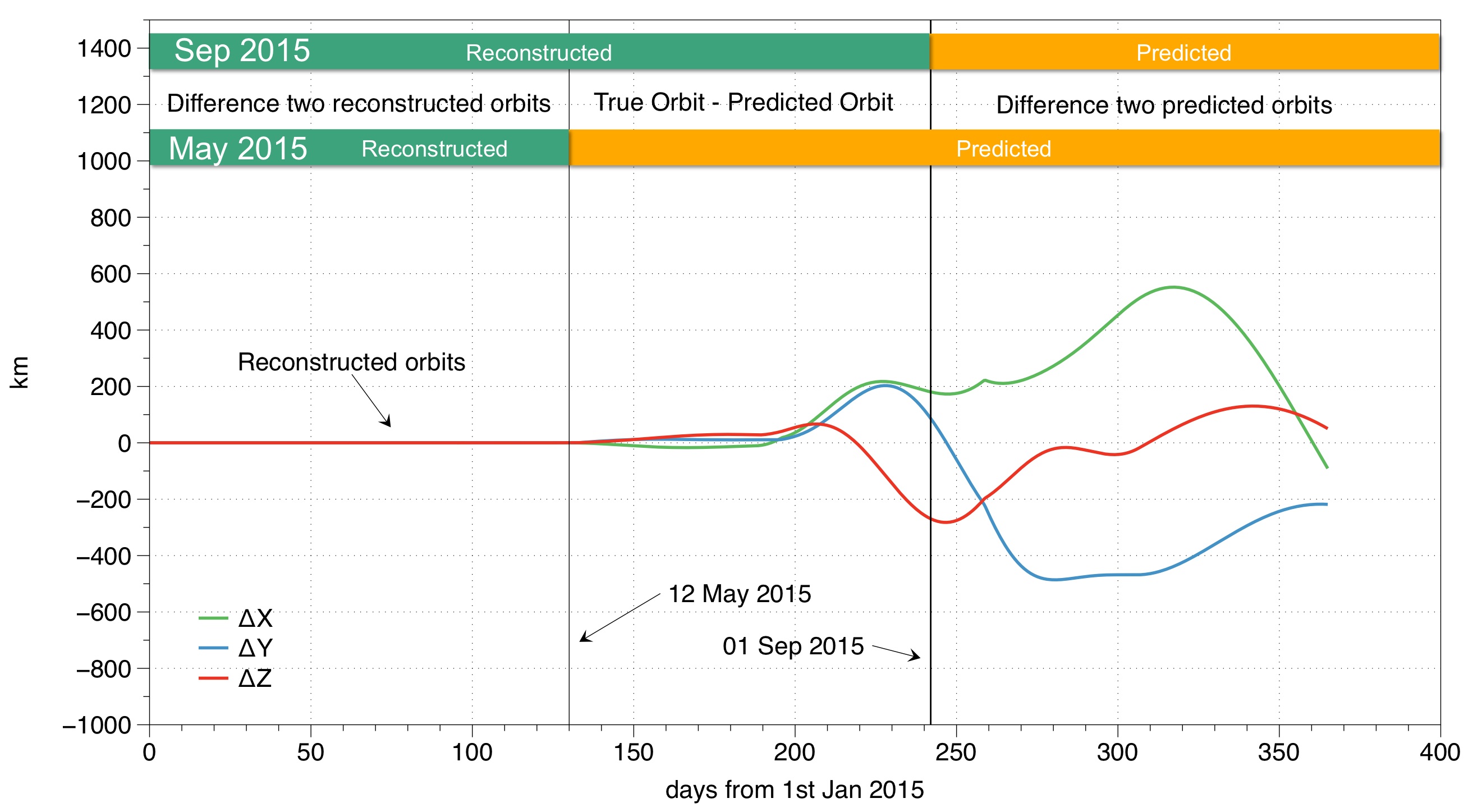IoW_20150918 - Gaia
Image of the Week |
|||
Gaia Orbit Reconstruction |
|||
| Differences in km between two deliveries of the Gaia orbit. The left part shows that the final reconstructed orbit is the same in both deliveries and the two predicted orbits on the rightmost panel differ by less than 1000 km, well below the requirements. The orbit is updated every week by the ESOC Flight Dynamic Group and made available to DPAC. It is processed at ESAC into a Chebyshev representation and accessible through the DPAC Software Library (the so-called GaiaTools) for the whole mission. Reliable observation predictions of solar system objects depend very much on the quality of the predicted orbits. | |||
|
The astrometric analysis of the Gaia observations can only be performed to the highest accuracy if one knows where the spacecraft was at the time of observation. Requirements are very stringent for the orbit tracking and highly challenging for the teams involved at ESOC. At the very end one expects the position of Gaia to be known within one hundred metres uncertainty and its velocity at the mm/s level. We know today that this challenge will probably be met thanks to the combination of the radio, Doppler and optical tracking of the spacecraft.
A previous comparison with a much earlier initial orbit (October 2014) shows that the difference between the predicted and the final orbit has dropped by a factor 3, down to 400 km from 1500 beforehand. Although it can go differently in the future, it is nice that we can rely on a predicted orbit so close to the final orbit for the assessment of observations of solar system bodies and to make observation predictions long in advance with a sufficient reliability. Unlike the stars, the apparent direction of nearby minor planets is very sensitive to the exact location of the observing platform. Likewise events like the passage of the Moon on the solar disk can be predicted more safely with a reliable predicted orbit.
Credits: ESA/ESOC/DPAC, F. Mignard (Observatoire de la Côte d'Azur), S. Klioner, A. Butkevich, (Lohrmann Observatory, Dresden), F. Budnik (ESOC) and the Orbit Determination Team [Published: 18/09/2015] |
|||
- Removed a total of (9) style text-align:center;
- Removed a total of (5) style text-align:justify;
- Removed a total of (1) border attribute.
- Removed a total of (1) cellpadding attribute.
- Removed a total of (1) cellspacing attribute.
Image of the Week Archive
- Removed a total of (1) border attribute.
- Removed a total of (1) cellpadding attribute.
- Removed a total of (1) cellspacing attribute.








































 Sign in
Sign in
 Science & Technology
Science & Technology

